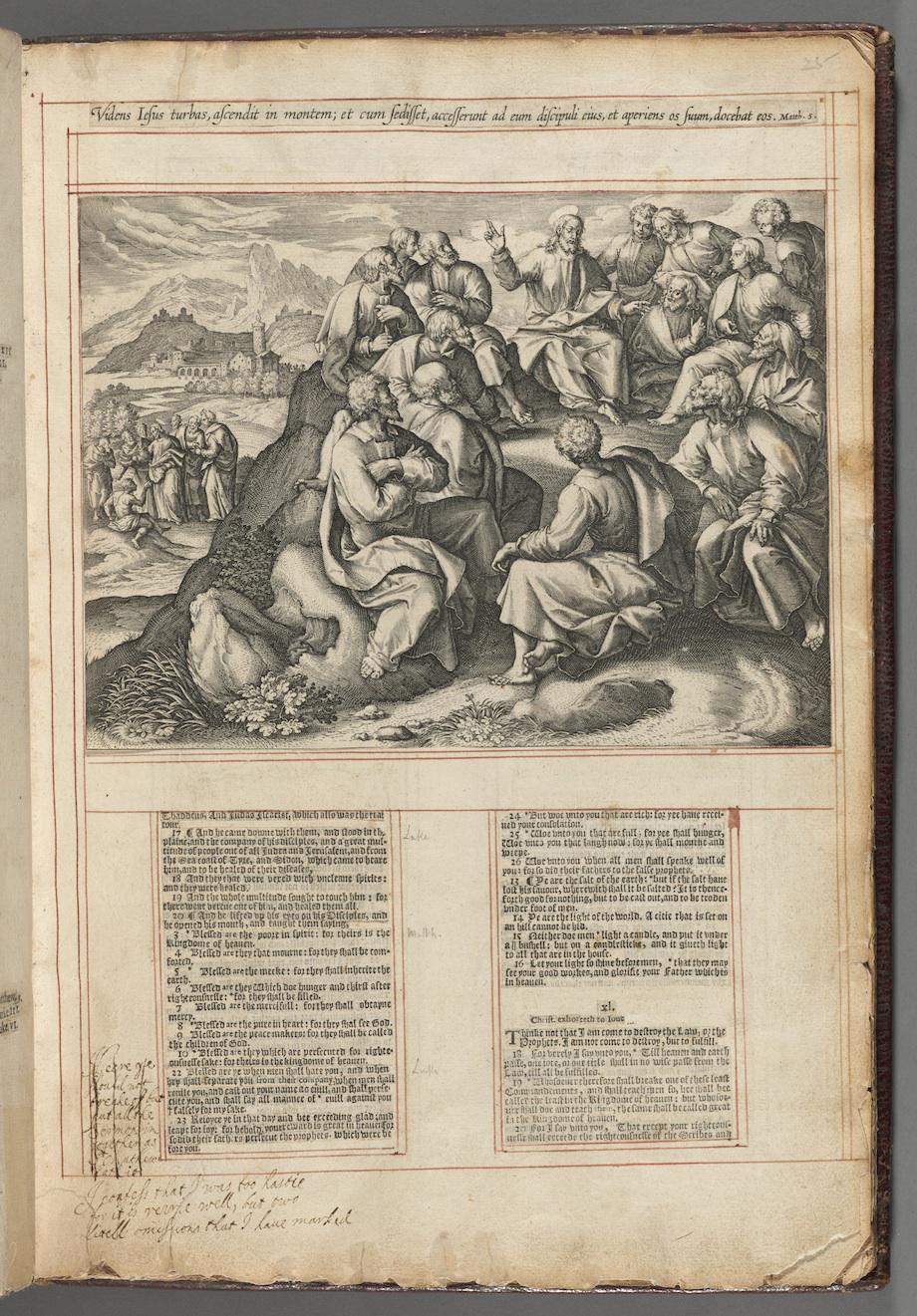The Vault is Slate’s new history blog. Like us on Facebook; follow us on Twitter @slatevault; find us on Tumblr. Find out more about what this space is all about here.
These pages are from a Little Gidding Harmony, an unusual version of the Gospels made in 1630 by cutting and pasting bits of text and illustrations. The Ferrar family, Anglicans who lived in a small religious community called Little Gidding in Huntingdonshire, UK, made these Harmonies as part of their devotional practice. This particular Harmony is held at Harvard’s Houghton Library, and was recently digitized and made publicly available.
Cutting apart printed Bibles with painstaking care, the Ferrar family and their co-religionists selected parts of the Gospels of Matthew, Mark, Luke, and John, each of which talk about Christ’s life from different perspectives. Pasted together in chronological order, the bits made a “Harmony”—a complete story, split into 150 chapters. The pages also contain illustrations, taken from books of Flemish/Netherlandish engravings, or English copies thereof.
Whitney Trettien, a graduate student at Duke who’s writing her dissertation on the Harmonies, says that in later editions of their Harmony, the Little Gidding group evolved a method of marking discrepancies in the Gospels’ accounts of Jesus’ life through the use of different typefaces and colored inks.
Others had published edited versions of the Bible before this community produced theirs (and others would apply scissors and paste to Bibles in the years to come, including, most famously, Thomas Jefferson). But the Little Gidding version became famous when one of the community’s neighbors lent this particular copy of the Harmony to King Charles I. The king liked the reading experience so much that he commissioned his own Harmony (now at the British Library), and acted as a patron to the community for years afterwards.
The annotation on the second image below records Charles’ disagreement with the way that the Little Gidding group had arranged the text of the Sermon of the Mount. In the third image, Charles points out another error, and then crosses out his annotation, writing “I confess that I was too hastie / for it is verrie well, but two / littell omissions that I haue marked.”
Thanks to Whitney Trettien, whose blog post on the Harmonies offers much more information on the text; to John Overholt of Harvard’s Houghton Library (blog; Twitter); and to the Episcopal Women’s History Society, which underwrote the digitization of Houghton’s Harmony.

Harvard University - Houghton Library/Bible. N.T. Gospels. English. Authorized. 1630. (Little Gidding concordance] [Little Gidding, 1630.] Vault A 1275.5. Houghton Library, Harvard University, Cambridge, Mass.

Harvard University - Houghton Library/Bible. N.T. Gospels. English. Authorized. 1630. (Little Gidding concordance] [Little Gidding, 1630.] Vault A 1275.5. Houghton Library, Harvard University, Cambridge, Mass.

Harvard University - Houghton Library/Bible. N.T. Gospels. English. Authorized. 1630. (Little Gidding concordance] [Little Gidding, 1630.] Vault A 1275.5. Houghton Library, Harvard University, Cambridge, Mass.